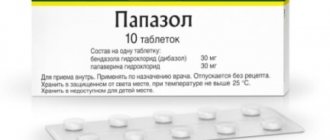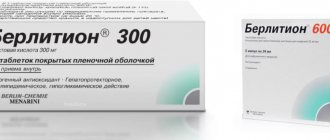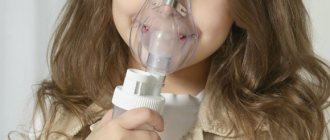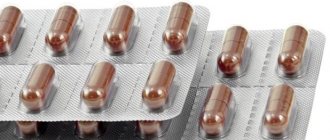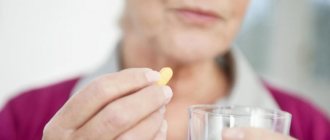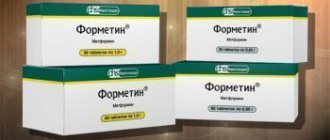Lamisil for nail fungus is the first remedy that a doctor will prescribe for this disease, as it has a number of advantages over other identical drugs. It is necessary to take up the treatment of nail fungus seriously and efficiently, because it is a very dangerous and unpleasant disease caused by spores of dermatophyte fungi. Its insidiousness also lies in the fact that onychomycosis is contagious, that is, it can be transmitted by contact from person to person.
Composition and release form
The composition of Lamisil cream includes the active ingredient – terbinafine hydrochloride. One gram of cream contains about 10 mg of this active ingredient.
In addition to terbinafine, the drug contains minor components, including:
- benzyl, stearyl and cetyl alcohol;
- sodium hydroxide;
- cetyl palmitate;
- sorbitan stearate;
- polysorbate 60;
- isopropyl myristate;
- purified water.
The cream has a white color with slight inclusions, as well as a slight, subtle odor.
"Lamisil" (cream) is an antifungal agent. For external use only. Produced in Switzerland.
The drug is produced in tubes of 15 and 30 ml. Each tube is tightly closed with a special membrane that prevents air from entering. The tube is screwed on with a plastic cap. The medicine is packaged in a cardboard box along with instructions for using the external agent.
The shelf life of this medication is five years from the date of its manufacture. The drug should be stored at a temperature not exceeding + 30 degrees, in a place protected from children and from sunlight. This drug should not be used after the expiration date.
Lamisil overdose, symptoms and treatment
The low systemic absorption of terbinafine in topical forms makes the likelihood of overdose very low. Accidental ingestion of the contents of one 30 g tube of cream (containing 300 mg of terbinafine hydrochloride) can be compared to taking 1 tablet of Lamisil 250 mg (oral dosage form). Nausea, pain in the epigastric region, dizziness, diarrhea, neutropenia, thrombocytopenia may occur. If it enters the stomach, induce vomiting. Treatment is symptomatic.
Pharmacological properties of the cream
Lamisil cream is an antifungal agent intended for topical use. Characterized by a wide range of effects. Shows particular activity against yeast fungi, dermatophytes, dimorphic pathogenic microorganisms, as well as mold fungi.
The drug has fungicidal or fungistatic properties, which manifest themselves depending on the type of fungus with which it comes into contact.
Terbinafine has a special effect on the initial period of sterol biosynthesis, which occurs directly in fungi. Such an effect leads to a lack of ergosterol and an excess of intracellular squalene. This process causes the death of pathogenic microorganisms. Terbinafine bases its activity on the inhibition of a special enzyme, squalene epoxidase. This enzyme is located deep in the fungal cell membrane.
The active ingredient "Lamisil" does not affect the cytochrome P450 system, therefore it does not affect hormonal metabolism or the action of other drugs.
When used externally, absorption is about 5%. Therefore, this drug may cause negative systemic effects.
Effect of the drug
Lamisil has a wide spectrum of action. Only the activity of the drug against pathogens of dermatomycosis is clinically significant, which is the basis for determining the list of indications for use.
The effect of the medication applies to fungi that affect the skin, hair and nails. Low concentrations of terbinafine provide a fungicidal effect. This is how the drug acts on dermatophytes, molds and some dimorphic fungi. The effect on yeast fungi can be fungicidal or fugistatic - the type of activity depends on the type of microorganism.
Terbinafine provides a specific effect regarding sterols at the cellular level. As a result, their biosynthesis is suppressed at an early stage. Against this background, there is a lack of ergosterol, and squalene accumulates inside the cells, so the fungi are destroyed at the cellular level.
The effect of the drug is due to the fact that the enzyme squalene epoxidase is blocked. The object of this reaction is the membranes of fungal cells.
Lamisil tablets are used for oral administration, while the skin, hair and nails are provided with the required concentration of the drug to create a fungicidal effect.
When taking Lamisil internally, good absorption is observed, amounting to more than 70%. There is a first pass effect, so the level of absolute bioavailability is approximately 50%.
A single dose of one tablet ensures a maximum plasma concentration of 1.3 mcg/ml within 1.5 hours. If the drug is used continuously, this figure increases by an average of a quarter. The half-life takes about 30 hours.
There is a relationship between the bioavailability of the drug and food intake. It is insignificant, therefore adjustment of the dose taken with food is not required.
The binding of the drug to plasma proteins is significant and amounts to 99%. There is rapid penetration of terbinafine through the dermis and its concentration in the lipophilic stratum corneum. The substance also appears in the secretion of the sebaceous glands, which is why hair, hair follicles and skin accumulate it in high concentrations. During the first weeks of therapy, penetration of terbinafine into the nail plates is also observed.
Terbinafine is metabolized quickly. Cytochrome P450 isoenzymes are involved in this process. Biotransformation of the substance leads to the formation of metabolites that do not have antifungal activity. They are excreted in the urine.
If renal function is impaired and creatinine clearance is less than 50 ml/min, the rate of drug elimination may be halved.
Indications
The external agent is intended for the treatment of fungal skin lesions caused by dermatophytes. This may be athlete's foot, cracked feet, itchy feet, peeling of the dermis and similar diseases of the dermis. The drug is used for keratinization on the heels and for inguinal athlete's foot.
The intended use of the drug is fungal infections of the skin. The drug is also used for infections caused by candida yeast. Lamisil cream is used to treat diaper rash and tinea versicolor.
Pharmaceutical equivalents
The pharmacy market offers alternative options and cheap analogues of Lamisil tablets, which contain Terbinafine as the active ingredient:
- Terbizil;
- Terbinafine tablets;
- Fungoterbin;
- Atifin;
- Thermikon;
- Binafin.
Contraindications
Lamisil cream for nail fungus should not be used by people who are hypersensitive to terbinafine and other components that make up the drug.
With special caution, the external remedy is used for liver and kidney failure. Patients suffering from alcoholism, having disorders of bone marrow hematopoiesis, as well as people with tumors, vascular diseases and diseases associated with metabolic disorders should use the cream with caution.
Caution should be exercised when using this drug in children under twelve years of age due to the lack of adequate clinical trials.
Lamisil cream should be used with caution in pregnant women. Only for strict indications, since clinical experience with the use of this drug in patients in this category is limited. Terbinafine did not show teratogenic properties during clinical studies.
The active ingredient in Lamisil cream passes into breast milk. Since this product is intended only for topical use, the amount of active substance that is absorbed through the skin is negligible and cannot harm the baby.
Contraindications to treatment with Lamisil and possible side effects
The antimycotic drug Lamisil is well tolerated by the vast majority of patients. The only contraindication to starting treatment is individual hypersensitivity to the active component of this drug, i.e. terbinafine.
Possible side effects include:
- hypersensitivity reactions (allergy);
- headache;
- paresthesia (sensitivity disturbances);
- change in taste sensations;
- loss of appetite;
- dyspeptic disorders;
- skin rashes;
- joint pain;
- muscle pain;
- liver dysfunction (in very rare cases).
Important: the listed undesirable effects sometimes develop during systemic therapy. The use of external forms in some cases can provoke allergies, itching, burning and hyperemia of the skin at the site of application.
In case of overdose (taking up to 5 g), nausea and pain in the projection of the stomach are possible. In such cases, gastric lavage and the use of sorbents (for example, activated carbon) are indicated. Similar tactics should be followed in case of accidental ingestion of external forms orally.
Cream "Lamisil": instructions for use
Adults and children over twelve years of age should thoroughly clean the affected area of skin before applying this product. The cream can be used one to two times a day. The product is applied in a thin layer to the affected area and adjacent skin areas. When applying the drug, rub it in lightly.
If there is diaper rash in the affected area (usually it occurs under the mammary glands, in the area of the buttocks, groin and in the spaces between the fingers), then the areas treated with this product are covered with gauze, securing it. If you are treating a large area of skin, you should purchase the product in 30 g tubes.
The therapeutic course lasts:
- For dermatomycosis of the legs and torso - one week, the product is applied once a day.
- For dermatomycosis of the feet, the product is used for seven days, once a day. If the disease is complicated by cracks, keratinization, foot fungus, peeling of the skin and there is itching in the affected area, then the duration of treatment is two weeks. In this case, the drug is applied 1-2 times a day.
- For dermal candidiasis, the duration of therapy is 1-2 weeks. The product is applied once or twice a day, depending on the severity of the fungal infection of the skin.
- For tinea versicolor, the drug is used 1-2 times a day for fourteen days.
In the first days of using the drug, an improvement in the condition of the skin is observed. The instructions recommend applying Lamisil cream regularly, since if used incorrectly, the infection will not heal completely, and if treatment is stopped prematurely, the infection will appear again.
If no improvement is observed within 7-14 days of using this remedy, you should consult a doctor to clarify the diagnosis.
When treating elderly people, dosage rules should not be changed. This drug is not recommended for use by persons under twelve years of age.
Use during pregnancy and breastfeeding
Studies on this issue have been conducted on animals, and no negative effects have been identified. In addition, there was also no information regarding harmful effects on the fetus. Considering the fact that when used externally, the components of the ointment enter the general bloodstream only in small quantities, the ointment is unlikely to have any effect on the child.
Despite this, the possibility of using the ointment during pregnancy and breastfeeding is considered not to be fully studied, so this drug is prescribed only in cases of extreme necessity, subject to the standard condition - the benefit is considered more significant than the possible harm.
Side effects of using the cream
Anti-fungal cream "Lamisil" in some cases can provoke negative reactions in the body. In the area where this product is applied, burning, itching and redness of the skin, as well as other allergic reactions, may occur. If side effects occur, treatment with the cream should be discontinued.
When treated with cream, no symptoms of overdose were observed in patients. If the drug is accidentally taken orally, headache, nausea, abdominal discomfort and dizziness may occur. If these reactions occur, you should take activated charcoal, consult a doctor and apply symptomatic therapy.
Lamisil® (Lamisil®)
Lamisil® was generally well tolerated. Side effects are usually mild or moderate and transient. The following are adverse events that were observed during clinical trials or during the post-marketing period.
When assessing the frequency of side effects, the following gradations were used: “very often” (≥1/10), “often” (from ≥1/100 <1/10), “infrequently” (≥1/1000 <1/100), “rare” (≥1/10000 <1/1000), “very rare” (<1/10000), including isolated reports.
Blood and lymphatic system disorders
: infrequently - anemia; very rarely - neutropenia, agranulocytosis, pancytopenia, thrombocytopenia.
Immune system disorders
: very rarely - anaphylactoid reactions (including angioedema), cutaneous and systemic lupus erythematosus (or their exacerbation).
Mental disorders
: often - depression; infrequently - anxiety.
Nervous system disorders
: very often - headache; often - dizziness, disturbances in taste, up to their loss (usually recovery occurs within a few weeks after stopping treatment). There are isolated reports of cases of long-term disturbances in taste. In some cases, while taking the drug, exhaustion was noted. Uncommon: paresthesia, hypoesthesia.
Visual disorders
: uncommon - visual impairment.
Hearing and labyrinth disorders
: uncommon - tinnitus.
Disorders of the liver and
biliary tract
: rarely, hepatobiliary dysfunction (mainly of cholestatic nature), incl. liver failure, including very rare cases of severe liver failure (some fatal or requiring liver transplantation; in most cases where liver failure developed, the patient had serious underlying systemic diseases and the causal relationship of liver failure with Lamisil® was questionable ), hepatitis, jaundice, cholestasis, increased activity of liver enzymes.
Digestive system disorders
: very often - bloating, loss of appetite, dyspepsia, nausea, mild abdominal pain, diarrhea.
Skin and subcutaneous tissue disorders
: very often - rash, urticaria; uncommon - photosensitivity reactions; very rarely - Stevens-Johnson syndrome, toxic epidermal necrolysis, acute generalized exanthematous pustulosis, erythema multiforme, toxic skin rash, exfoliative dermatitis, bullous dermatitis, psoriasis-like skin rashes or exacerbations of psoriasis, alopecia.
Musculoskeletal and connective tissue disorders
: very often - arthralgia, myalgia.
General disorders
: often - feeling tired; infrequently - increased body temperature.
Laboratory and instrumental data
: infrequently - weight loss (secondary to impaired taste).
Based on spontaneous reports received during the post-registration period and literature data, the following adverse events were identified, the frequency of which, due to the inaccurate number of patients, cannot be established:
Immune system disorders
: anaphylactic reactions, serum sickness-like syndrome.
Visual disorders
: blurred vision, decreased visual acuity.
Skin and subcutaneous
tissue
: drug rash with eosinophilia and systemic symptoms (rash, swelling, fever and swollen lymph nodes).
Hearing and
labyrinthine
: hearing loss, hearing impairment.
Vascular disorders
: vasculitis.
Nervous system disorders
: loss of smell, including for a long period of time, decreased sense of smell.
Digestive
system
: pancreatitis.
Musculoskeletal
and connective tissue
: rhabdomyolysis.
General disorders
: flu-like syndrome.
Laboratory and instrumental data
: increased activity of creatine phosphokinase in blood serum.
If any of the side effects indicated in the instructions get worse, or you notice any other side effects not listed in the instructions, tell your doctor.
Special instructions for use of the drug
During clinical studies, drug interactions between Lamisil cream and other drugs were not observed.
When treated with this drug, improvements were visible after the first days of its use. The severity of symptoms of the disease decreases. The risk of recurrent infection is reduced. If the cream is applied irregularly or the course of treatment is shortened, then there is a possibility of resumption and development of the infectious disease.
The cream should only be used externally. When using it, you should be careful and make sure that this product does not get into your eyes. This may cause irritation to the visual apparatus. If this cream gets into your eyes, you should immediately rinse them under running water and consult a doctor for help.
If an allergic reaction occurs when using the cream, then its use should be discontinued.
Several products are produced under the Lamisil brand, but the most similar in composition, release form, and action are cream and dermgel. Because of this feature, many people have a question: which is better - Lamisil gel or cream? Both of these products have the same indications and contraindications, but the cream has a softening property and works more successfully with rough and hardened areas of the skin. Heals cracks better and eliminates keratinization more successfully. Characterized by a moderate drying effect. Gel, unlike cream, dries the skin more, but is absorbed faster and has a cooling effect. When the integrity of the skin is compromised and the damage to the skin is severe, it is recommended to use Lamisil cream; the gel is used in less advanced cases. The doctor will tell you which treatment is best to choose, based on the clinical manifestations of the disease.
Compatibility with other drugs
During therapy with Lamisil, it is important to consider that medications taken concomitantly may lead to certain reactions.
It is possible to accelerate the plasma clearance of Lamisil if metabolic inducers are taken simultaneously. The opposite reaction is observed when cytochrome P450 inhibitors are used. In both cases, you may need to adjust your Lamisil dosage.
It is possible to increase the effectiveness of terbinafine or its plasma concentration with simultaneous use of cimetidine. In this case, there is a decrease in its clearance by a third.
When combining rifampicin and terbinafine, the clearance of the latter doubles.
If drugs that are metabolized by cytochrome P450 are taken simultaneously with Lamisil, their clearance may be slightly increased or suppressed. The combination of Lamisil with digoxin or antipyrine does not affect the clearance of the latter.
If the patient takes oral contraceptives, then in combination with antifungal therapy this can cause menstrual irregularities.
The use of Lamisil affects the clearance of caffeine, reducing it by almost 20% in the case of intravenous administration. With simultaneous use of desipramine, its clearance is reduced by more than 80%.
If drug metabolism is carried out with the participation of the CYP2D6 enzyme, then when combined with Lamisil it may be suppressed. This factor may have clinical significance if this enzyme is the predominant mechanism of metabolism. This feature is characteristic of tricyclic antidepressants, selective serotonin reuptake inhibitors, β-blockers, monoamine oxidase type B inhibitors, and antiarrhythmics belonging to class 1C. If it is necessary to simultaneously include such medications with Lamisil, the patient needs constant monitoring.
When Lamisil is combined with cyclosporine, the effect of the latter is weakened, and plasma concentrations may decrease. In this case, the clearance of the drug increases by 15%.
Combination with fluconazole can affect the maximum concentration of the drug in the blood, increasing it by more than 50%. A similar effect is observed when taking amiodarone or ketoconazole simultaneously.
Cream "Lamisil": reviews
Fungus is a problem that many people face. A variety of means are used to treat it. Very often, patients use Lamisil cream in the treatment of this disease. Reviews (the instructions detail the rules for applying this medication, and before using an external agent it must be carefully studied) there are different reviews about it.
People satisfied with this product noted the quick and good results that came from the first days of use. Patients claim that the itching has disappeared, the unpleasant odor has disappeared, the skin on the damaged area has recovered and has stopped peeling. Reviews note the soft consistency of the external product, lack of odor and ease of use. The cream helped cure an old foot fungus that had not responded to other treatments for many years. These individuals consider the drug in question to be the best and recommend it to other people who have the same problems.
Using this cream, patients were cured of ringworm, dermatophytes and cutaneous candidiasis. In the latter case, Lamisil cream was mixed with Advantan in a 1:1 ratio.
Patients note the importance of completing the full course. They say that even if all the symptoms have passed, the cream must be used for at least a week to consolidate the result. Otherwise, the disease may return.
There are people for whom Lamisil cream did not help. They note that the drug does not give a feeling of softness. According to them, in the evening, after applying the cream, the skin looks softened, and in the morning the previous dryness and flaking returns. Some say that the product does not relieve feet from dead skin and cracks. Lamisil cream is powerless against nail fungus.
Users claim that it is useless for them to treat the fungus in an advanced stage. They note that the cream is expensive and does not bring the long-awaited result.
Contraindications to the use of antifungal agents
The ointment is absorbed into the skin in the area of its application, and only 5-10 percent enters the systemic bloodstream. Despite such an insignificant, at first glance, figure, there are contraindications in the use of the product:
- hypersensitivity to individual components of the composition;
- diseases associated with disruption of normal metabolism;
- circulatory disorders in the spinal cord;
- alcohol addiction;
- disruption of the normal functioning of the liver and kidneys.
If an allergic reaction occurs, the use of the ointment should be stopped immediately, and the area of application should be carefully washed with soap and water.
Doctors' opinion
Doctors often use the drug Lamisil in their practice. It is prescribed for fungal infections of the skin. They say that this remedy is equally good both in monotherapy and in combination with other medications. According to doctors, treatment with the cream gives results already on the second day of its use. Before therapy, it is advised to take into account all the contraindications that the instructions for use warn about.
Lamisil cream is considered by doctors to be a modern antifungal agent. They call it highly effective. They say that it always gives good results when treating fungal infections.
Medical reviews of Lamisil cream have only positive reviews. There is not a single dermatologist who would not like to use this product. Doctors note that the cost of this drug is completely justified.
How long does Lamisil last?
The package with the drug should be kept in a place shielded from sunlight at a temperature not exceeding +30°C.
The shelf life of the antimycotic is 5 years from the date of issue.
Keep away from children!
Plisov Vladimir, medical observer
5, total, today
( 155 votes, average: 4.63 out of 5)
Dexilant 30, 60 mg: instructions for use, analogues
Lorakson: instructions for use and analogues
Related Posts
Cost of medicine, analogues
Despite the effectiveness of the use of Lamisil cream in the treatment of fungus, its cost makes it not affordable for all patients. So, a tube with a volume of 30 grams costs about 800 rubles, and a tube with a volume of 15 g can be purchased for 400 rubles. The cream is sold at the pharmacy, and there are no problems purchasing it.
If for some reason this product is not suitable, then the following analogues will help replace it:
- "Terbinafine" - 60 rubles for 15 g.
- “Thermikon” - 200 rubles for 15 g.
- "Fungotherbin" - 300 rubles for 15 g.
- "Exifin" - 200 rubles for 10 g.
- "Atifin" - 180 rubles for 15 g.
- “Binafin” - 250 rubles per 10 g.
- "Exoderil" - 400 rubles for 15 g.
- "Batrafen" - 400 rubles for 15 g.
- “Mikoseptin” -400 rubles for 30 g.
These and other drugs can be a worthy alternative to Lamisil cream. You cannot select an analogue yourself. To review treatment, you should consult a doctor, only then can you hope for a successful outcome of therapy.
Lamisil's analogs
There are cheap analogues of Lamisil with similar effects based on the active ingredient terbinafine.
- Analogs of tablets - Terbinafine Hexal, Onychon, Terbizil, Exifin.
- Analogues of the spray are Lamican, Thermikon, Fungoterbin, Lamitel.
- Analogues of the cream - Atifin, Exifin.
For fungal nail infections, it is possible to use Lamisil analogues based on other active substances:
- Exoderil is a cream or solution with the active ingredient Naftifine. At the same time it has a bactericidal effect.
- Nizoral - the active ingredient is ketoconazole (cream, tablets, shampoo).
- Batrafen is a fungal nail polish that also has an antiseptic and antibacterial effect.

